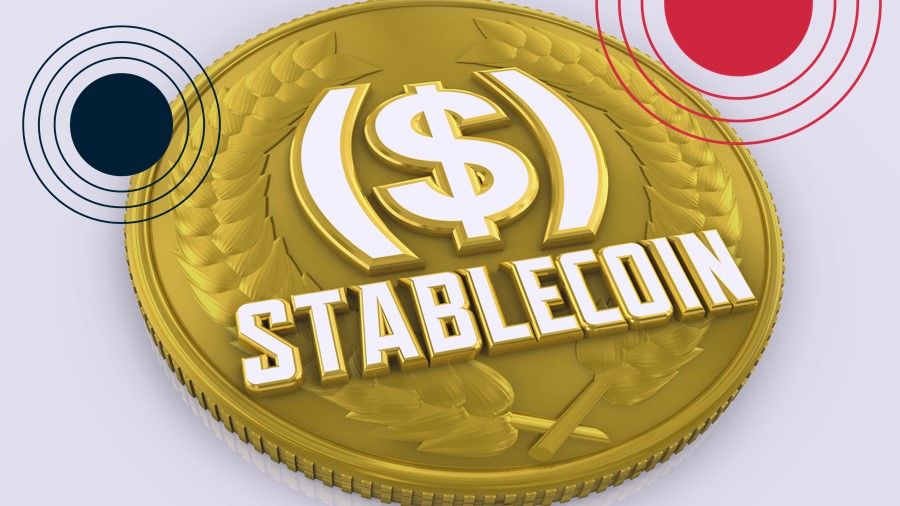Yes, Terra was very like Lehman Brothers

The failure of Terra (UST), the stablecoin, was very akin to the Lehman Brothers default. In fact, it was more surprising. Terra was a cash-like instrument backed by two sources of support: its own assets and a cross hedge from LUNA, another liquid instrument. The contagion effect of Lehman was under appreciated for weeks after the event, but the default of Lehman very nearly collapsed the US financial system. It is time to rethink the contagion effect of Terra specifically, and cryptocurrencies.
The old-time crypto community was a relentlessly optimistic group. But the arrival of traditional institutional investors has changed the tone of crypto analysis. Consider Coinbase. Coinbase stock has fallen more than 70% since the start of 2022.
The fall in cryptocurrency prices has occurred before. The crypto industry is arguing that the crash of Coinbase and the other current crypto problems are one more crypto winter to survive before the market surges to new highs. A more cautious set of investors asks whether this is the end of crypto as an investable market.
These recent industry events invite allegations of even more fraud which can be expected to drive regulators into almost immediate action. And they should.
Regulators must act
Regulators need to act now not merely plan to regulate. The spectacular fall in the crypto markets will indeed propel the regulatory thrust headed toward the market. The instability evidenced by recent crypto market swings supports an aggressive approach to federal regulation. Indeed Janet Yellen at the US Treasury has declared stablecoin to be a threat to US financial stability. Yellen’s remarks are a clear indication that the Treasury regulations for crypto are a virtual certainty. But they are clearly already too late.
Stablecoin has been a focus of regulatory proposals. While we are waiting for American regulation of stablecoin, we need to appreciate that stablecoin has already been the subject of intensive proposed regulation in the European Union. The “Proposal for a Regulation Of The European Parliament and The Council on Markets in Crypto-Assets” is awaiting European Parliament approval. The document is an extensive four-hundred-page treatment of the regulation of cryptocurrency including stablecoins.
Stablecoins come in a growing number of types. These currently include fiat-backed, yield-generating, algorithmic, and DAO-based stablecoins. The crypto industry has taken the position that the EU proposal will cover all of these types of stablecoins and improve their value by clarifying their legal status.
The Federal Reserve, and other agencies, have been deeply involved in understanding the stablecoin sector. In January 2022, the Fed issued an extensive, and what seemed at the time to be, a fairly balanced analysis of stablecoin. The Fed conclusion that “Additionally, dollar-pegged stablecoins backed by adequately safe and liquid collateral can potentially serve as a digital safe haven currency during periods of crypto market distress” now has to be in substantial doubt. [1]
Secrecy is crypto key
Jane Yellen has emerged as a Washington crypto regulation champion. She has noted that “federal regulation was needed to respond to the wave of speculative investment in the currency whose secrecy is an essential part of its appeal.” [2] It is exactly the secrecy element which needs to be addressed in any regulation. Secrecy is a key element in any security fraud.
Treasury will act soon
The days of rumination and delay for Federal regulation of cryptocurrency are hopefully over. When the Treasury decides to act soon, the market should read that seriously. Nor does the Treasury have to give a long notice before it actually does something. The Treasury has in prior years given unannounced announcements that regulations will be proposed in the future to prohibit an activity. If the Treasury does that, it should be enough to halt any kind of bitcoin trading of any particular kind immediately. Presumably, the Treasury would be careful not to abuse its discretion but stablecoin trading is a candidate for preemptive regulation.
Cryptocurrency’s degree of systematic risk should be determined empirically and that requires immediate action. Only an audit of the process and coins can establish whether crypto is a true threat to economic stability. The Congress and the Treasury should act to establish that to be true or not.
Investor Implications:
1 – The Treasury has declared its intention to regulate the cryptocurrency industry and investors should trust that they will.
2 – The regulations should be presumed to restrict the trading of the asset.
3 – The value of stablecoins will be negatively affected by any Treasury regulations.
[1] Liao, Gordon Y. and John Caramichael (2022). “Stablecoins: Growth Potential and Impact on Banking,” International Finance Discussion Papers 1334. Washington: Board of Governors of the Federal Reserve System, https://doi.org/10.17016/IFDP.2022.1334.
[2] Hussein, Fatima, Crypto meltdown prompts Yellen to call for new regulation, May 12, 2022, Associated Press.
We hope you enjoyed this article. Please give us your feedback.
This article is not intended as investment, tax, or financial advice. Contact a licensed professional for advice concerning any specific situation.






